Study Says Complexion Counts With Sports Announcers
. . . ‘An Issue That Goes Far Beyond Sports’
Accused Neo-Nazi To Remain in Jail
Survey Finds Clichéd Reporting on Native Americans
Native Journalist Joins Calif. Editorial Board
Report for America Aids More Native Coverage
News Desert Impedes Blacks, Indians on Pipeline
Death Claims Pioneers, Accomplished Journalists
Columnist Seeks Last Word on His Ex-Boss
Short Takes

Complexion Counts With Sports Announcers
“Whether a TV announcer praises a college basketball player for being clever enough to grab [a] steal or simply credits arms long enough to make the play depends on the color of the athlete’s skin, according to new research,” Liam Farrell reported Feb. 28 for the University of Maryland.
“Rashawn Ray, UMD associate professor of sociology, and Steven L. Foy, associate professor of sociology at the University of Texas Rio Grande Valley, found that skin tone plays a measurable role in whether the success of student-athletes gets linked to their physical attributes or their mental acuity and personalities. The study was published online this week in the American Journal of Sociology. . . .
“The study was based on a random sample of 54 men’s NCAA tournament games broadcast between 2000 and 2010. Using transcripts of broadcaster comments and player positions on a skin tone scale, the researchers found players in the lightest skin tone category were more likely to be discussed in terms of overall performance, such as being called ‘as versatile as baking soda.’ Those in the darkest skin tone category were more frequently addressed for their physical abilities, like ‘another guy with a long wingspan.’
“Comments also shifted across the skin-tone scale. A one-unit increase in the darkness of a player’s skin resulted in a 16% decline in comments about offensive ability and a 12% decrease in comments about performance overall, with a 23% jump in comments about speed and a 21% increase in comments about size and height— even though players in the darkest skin tone category were on average significantly shorter and lighter than other athletes. . . .”
Neither A. Sherrod Blakely, chair of the Sports Task Force of the National Association of Black Journalists, nor Larry Graham, Diversity Committee chair of the Associated Press Sports Editors, responded to a request for comment.
. . . ‘An Issue That Goes Far Beyond Sports’
Derrick Z. Jackson (pictured, from Tufts University) began writing 30 years ago about racism in sports language, when he was an op-ed columnist at the Boston Globe. He said Friday that he is disheartened by the Ray and Foy study.
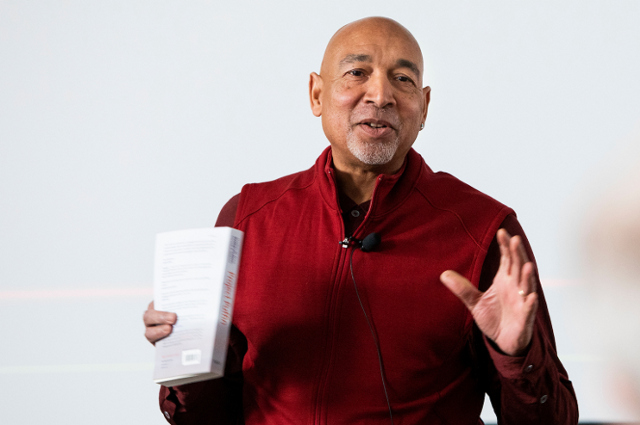 Jackson offered this perspective for Journal-isms:
Jackson offered this perspective for Journal-isms:
“It is good to see academics stay on this case. It felt to me when I was focused on this from the late 1980s to the late 1990s that there was progress being made. Going by this study, whatever learning there had been in the last generation of broadcasters disappeared with them.
“Anecdotally, it does feel like we’ve gone backwards, with broadcasters extolling the ‘athleticism’ of athletes at annoying levels. Like, uh, aren’t they ‘athletes?’ One study I recently quoted in The Undefeated said:
“ ‘This perception of athleticism is rooted in notions of black men as being hypermasculine. The image of the strong and aggressive athlete has been associated with low-income and working-class black men.’ The study said the stereotype for non-sports black men goes a long way to ‘negating their academic merit.’
“This is an issue that goes far beyond sports. Black athletes are vastly overrepresented compared to the racial makeup of the nation on pro football and basketball teams. Black men on college campuses are far more likely to be a scholarship athlete than a white male. With the pedestal society puts them on in television coverage, if they can’t get credit for their brains, that bodes ill for what white America collectively thinks of non-athletic black men. As I wrote in the Undefeated:
” ‘The default assumption that they are on campus for their body and not their mind is a pernicious microaggression. It is part of the dispiriting blunting and killing of career aspirations as studies continue to clearly demonstrate that African Americans with equal resumes are rejected far more often for advancement in the corporate and research world, let alone coaching big-time college and pro sports.’ “

Accused Neo-Nazi To Remain in Jail
“A federal judge ruled Monday that an Arizona man will remain jailed on a charge that he and other neo-Nazis mounted a harassment campaign, mailing and posting threatening messages, at the homes of journalists and anti-hate advocates in three states,” the Associated Press reported.
The targets included Miami Herald columnist Leonard Pitts Jr., ProPublica reporter A.C. Thompson and an unnamed member of the Arizona Association of Black Journalists.
“Johnny Roman Garza, 20, of Queen Creek, poses a danger to the community, Magistrate Judge John Boyle said.
“The judge expressed skepticism about Garza’s claim to have severed his ties with the neo-Nazi group Atomwaffen Division and noted that officers found a bulletproof vest during a search of Garza’s home. ‘That’s not something a 20-year-old would normally have,’ Boyle said.
“Garza and three other Atomwaffen Division members are expected to be sent to Washington state to face a charge of conspiring to send threatening mail and commit cyberstalking. None of the four men has entered a plea.
“Authorities said the goal of the campaign was to intimidate and retaliate against journalists for unfavorable reporting. One of the alleged leaders of the conspiracy is accused of calling for a campaign of threats against journalists after he was identified in a 2018 Seattle Times story as being an Atomwaffen Division member. . . . “
John Cameron Denton, of Montgomery, Texas, is charged in U.S. District Court in Alexandria, Va., with conspiring to call in fake threats targeting a ProPublica reporter and his office, Rachel Weiner and
Matt Zapotosky reported Feb. 26 for the Washington Post.

“Denton, according to prosecutors, directed a group of neo-Nazis who harassed ProPublica and a reporter there by calling in fake threats to law enforcement in hopes of provoking an overwhelming response — a practice known as ‘swatting.’ While the reporter is not named in court papers, the description is of A.C. Thompson, who has written extensively about Denton and Atomwaffen. . . .”
Thompson told Journal-isms that he could not comment.
Jamar Younger, president of the Arizona Association of Black Journalists, messaged Journal-isms on Tuesday, “We’ve discovered the identity of the AZABJ member who was targeted, but the person does not want to be identified for safety reasons. We’ve been working with our group and the NABJ national office to discuss how we can provide resources to our members to help them increase their awareness and stay safe. Our number one priority is our members’ safety.”
The harassment of Pitts at his home in Bowie, Md., was described in this space in January. John William Kirby Kelley, 19, was charged then with conspiracy.
“Cameron Brandon Shea, 24, of Redmond, Washington; Kaleb Cole, 24, of Montgomery, Texas; and Taylor Ashley Parker-Dipeppe, 20, of Spring Hill, Florida, were also arrested and charged” on Feb. 26, Chelsea Curtis of the Arizona Republic reported that day.
“All four of the men were referred to in the press release as ‘racially motivated violent extremists,’ Curtis wrote. “Shea and Cole are accused of creating threatening posters and delivering them electronically to members of the online chat group. Some members of the group then printed and delivered or mailed the posters to targeted journalists or activists.
“They referred to a Society of Professional Journalists website for a list of journalists and their contact information, the complaint said. In the chat, Garza said he had found ‘a leader of an “association of black journalists,” in his state’ according to the complaint.
“The posters included Nazi symbols, figures with guns and threatening language, according to the complaint. One poster also featured a man with press credentials around his neck and figures behind him holding guns, the complaint said. . . .”
“In the Seattle area, the posters were mailed to a TV journalist who reported on Atomwaffen and two people associated with the Anti-Defamation League, the press release said.”
- Department of Justice: Arrests in Four States of Racially Motivated Violent Extremists Targeting Journalists and Activists (Feb. 26)
- Editorial, Dallas Morning News: The FBI nabs four extremists for threatening journalists in Texas and other states — People at every level must stand against this. (Feb. 28)
- National Association of Black Journalists: NABJ Condemns Reported Extremist Activities Against Journalists Reported by the FBI (Feb. 26)
- Liam Stack, New York Times: Over 1,000 Hate Groups Are Now Active in United States, Civil Rights Group Says (Feb. 20)
- Neil G. Thomas, Dallas Morning News: This Lent, let’s give up dehumanizing language
- Ali Winston, Daily Beast: This Deadly Neo-Nazi Group’s Media Obsession Could Be Its Downfall
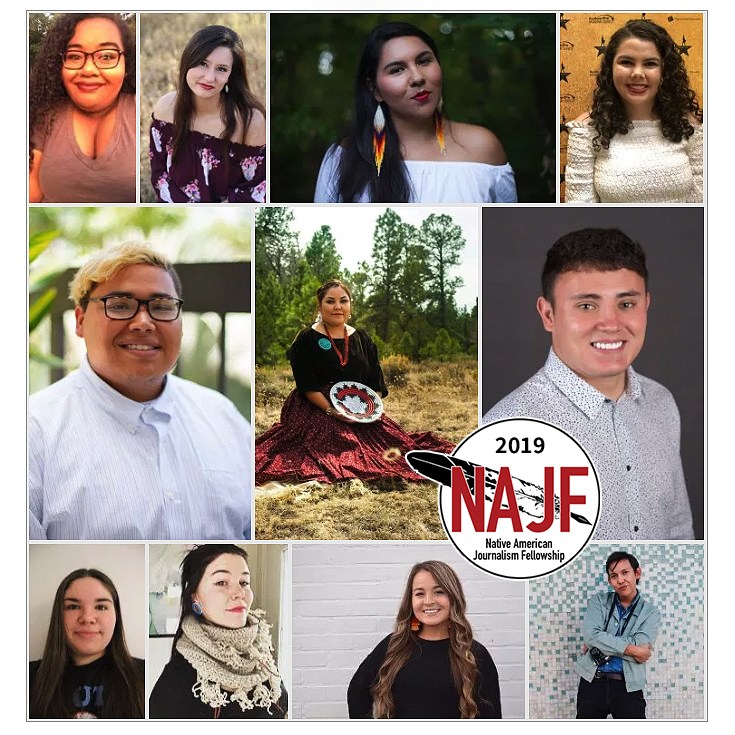
Survey Finds Clichéd Reporting on Indians
“More than half of national media coverage of Indigenous peoples in the U.S. . . . surveyed relied on clichéd themes and stereotyping terminology,” the Native American Journalists Association reported Feb. 10. [PDF]
“In the Native American Journalists Association’s Media Spotlight Report, NAJA took a snapshot of the dominant themes emerging in mainstream media coverage related to Indigenous peoples and communities.
“The research team, led by former NAJA Vice President Dr. Victoria LaPoe, broke down five national news outlets’ online coverage in the United States, analyzing emerging themes and terminology from 87 articles published in 2018 and 2019.
“Those publications included The Washington Post, The New York Times, The Guardian (U.S.), Fox News and NPR. . . .
“Using the NAJA BINGO Card as a guide, researchers identified how many times clichéd themes and stereotypes appeared in stories about Indigenous peoples and the issues they face.
[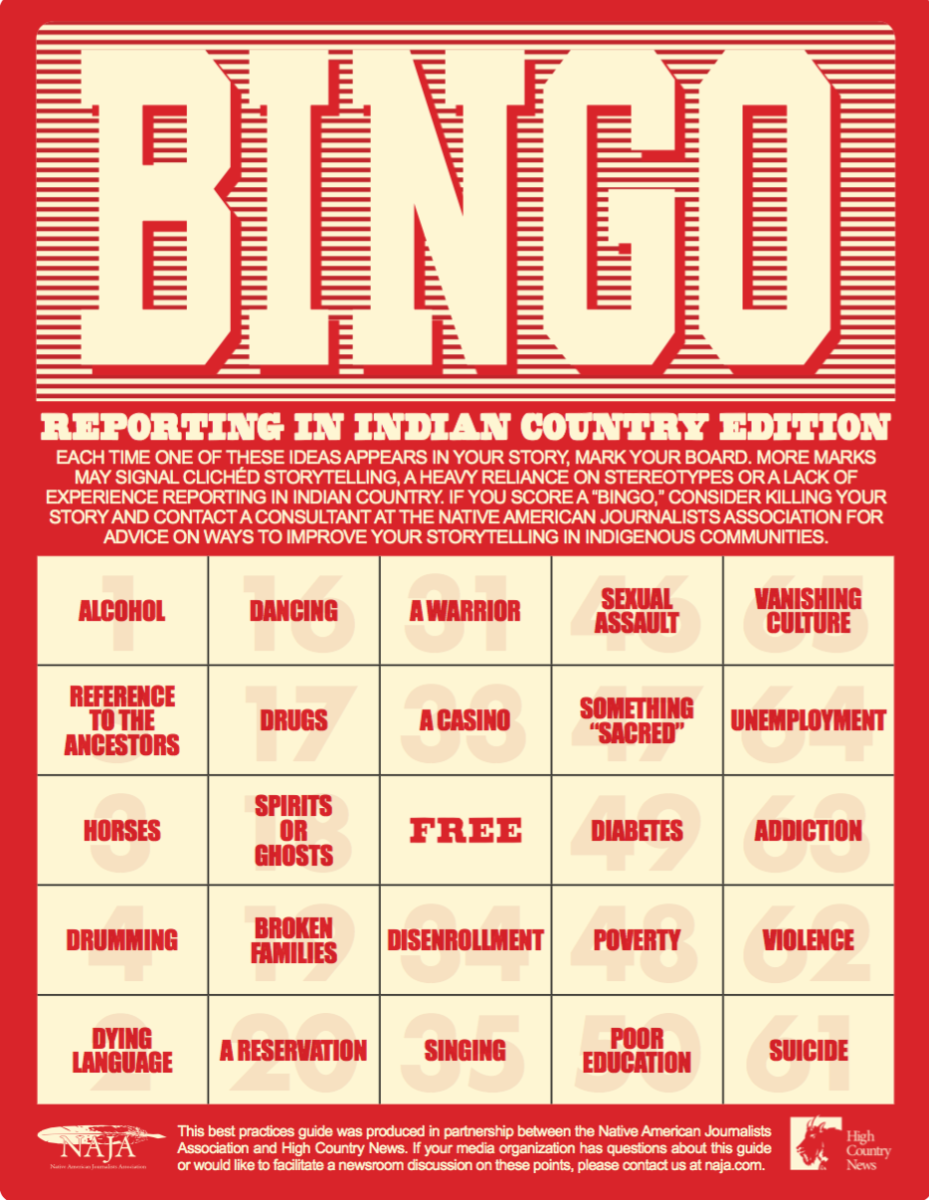 “The BINGO card has 14 key terms commonly found in news stories that display a limited knowledge of Indian [Country]. The most frequently used terms that appeared in the Media Spotlight Report centered on ‘poverty,’ ‘reservation,’ ‘drugs,’ ‘addiction,’ ‘alcohol’ and ‘drums.’
“The BINGO card has 14 key terms commonly found in news stories that display a limited knowledge of Indian [Country]. The most frequently used terms that appeared in the Media Spotlight Report centered on ‘poverty,’ ‘reservation,’ ‘drugs,’ ‘addiction,’ ‘alcohol’ and ‘drums.’
“More than half of the coverage analyzed contained at least one BINGO Card term and 26 percent of those stories contained more than one term.
“Content ran the gamut, including the continued use of dictionary-defined racial slurs in headlines and relying on stereotypical themes of poverty and drug addiction. Many of the stories placed Indigenous people in the past and relied heavily on interviews with officials versus talking to people directly impacted within the communities.
“Of the 87 stories surveyed,” fewer “than 7 percent were written by Indigenous reporters, calling into question the surveyed outlets’ inclusivity efforts. . . .”
- Elizabeth Jensen and Juliette Rocheleau, NPR: Reviewing NPR’s Expanding Coverage Of Native American Communities (Feb. 10)
Native Journalist Joins Calif. Editorial Board
 The Desert Sun in Palm Springs, Calif., has named Terria Smith (pictured) as one of three new editorial board members, one of the few Native Americans on a mainstream newspaper editorial board.
The Desert Sun in Palm Springs, Calif., has named Terria Smith (pictured) as one of three new editorial board members, one of the few Native Americans on a mainstream newspaper editorial board.
Smith “is a member of the Torres Martinez Desert Cahuilla Indians and has a tribal allotment residence on the reservation in the eastern Coachella Valley,” Opinion Editor Al Franco reported Feb. 2, updated Feb. 3.
She is editor of News From Native California magazine — a quarterly publication “devoted to the vibrant cultures, arts, languages, histories, social justice movements, and stories of California’s diverse Indian peoples.”
Franco also wrote, “She was a reporter for The Desert Sun and its weekly publication, the Palm Springs Sun, from 2008 to 2010.
“Her professional career has focused on Native American topics and social issues (she has been a mentor to young Native American journalists and is a community advocate against domestic violence). She brings this life experience to the Editorial Board. . . .”
Report for America Aids More Native Coverage
Coverage of Native American and Indigenous communities in the United States “is about to get a major boost, thanks to a new partnership between Report for America and the Native American Journalists Association to support 19 journalists in the next year,” Hanaa’ Tameez reported Feb. 24 for Nieman Lab.
“Report for America currently has 10 journalists covering Indigenous affairs and related beats and it plans to add nine more this year. . . .”
Tameez also wrote, “The way that Report for America works is that newsrooms apply to receive a corp member with an application making the case for why they need another reporter and the specific beat they’d be working on. Once the newsrooms are selected, journalists can apply and indicate what their top newsroom choices are. Report for America pays for half of the reporter’s salary while the newsroom puts up the second half. Newsrooms have the option to fundraise half of their half, and RFA helps them do so. . . .”
Separately, the San Manuel Band of Mission Indians has awarded a $1 million grant to Indian Country Today that will be used to help fund a weekly national newscast and hire new journalism talent, Indian Country Today reported on Feb. 3.
“San Manuel Band of Mission Indians has a history of philanthropy, including last year’s $1.1 million to the California wildlife recovery efforts. . . .”
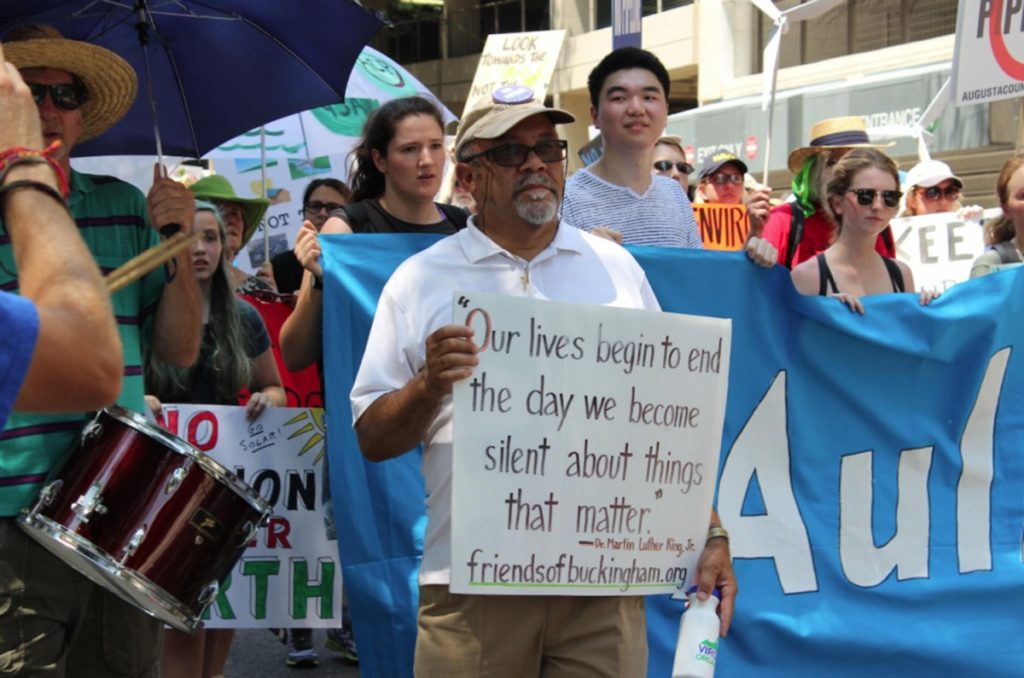
News Desert Impedes Blacks, Indians on Pipeline
“The proposed path of the Atlantic Coast Pipeline snakes 600 miles through West Virginia, Virginia, and North Carolina,” Lyndsey Gilpin wrote Feb. 21 for Columbia Journalism Review. Construction of the 42-inch-wide natural gas pipeline was halted in December 2018. . . .”
On Feb. 24, the Supreme Court heard arguments over a key permit that it would need to start up again.
“If the pipeline is built, then one of its three planned compressor stations — massive facilities that help compress and transport natural gas — will be located in Northampton County, North Carolina, a swampy, rural region where the vast majority of residents are black,” Gilpin continued. “The county is already home to industrial hog farms, a wood-pellet plant, and large landfills — other industrial projects that have enormous effects on the surrounding land and its residents.
“Northampton is also one of six counties in North Carolina without a newspaper, according to a University of North Carolina report on expanding news deserts. . . .”
Gilpin also wrote, “Low-income communities, rural communities, and communities of color are put most at risk by oil and gas development. They stand to lose the most, too, from a lack of information.
“Robeson County is 23 percent black, 31 percent white, and 42 percent American Indian; it is the largest county in the state, which has lost black-owned news outlets and Indigenous news outlets such as the Carolina Indian Voice. Without dedicated news coverage, some residents say, critical stories — about the struggles of Native American communities trying to keep their land, or other energy projects being built in communities of color — fall through the cracks. . . .”
- Elizabeth Jensen, NPR: Working Together To Alleviate ‘News Deserts’
Death Claims Pioneers, Accomplished Journalists

- “Longtime Fox News White House correspondent Wendell Goler died this week at age 70,” Brian Flood reported Thursday for Fox News. Goler joined Fox News Channel in 1996 as a correspondent and worked his way up to senior White House foreign affairs correspondent.
“Goler . . . worked his way up to senior White House foreign affairs correspondent. The Washington D.C.-based reporter covered five presidents over 28 years at the White House during his storied career. . . .” Goler was known for insisting on being a straight-down-the-line reporter as the network was increasingly seen as partisan. He retired in 2014.
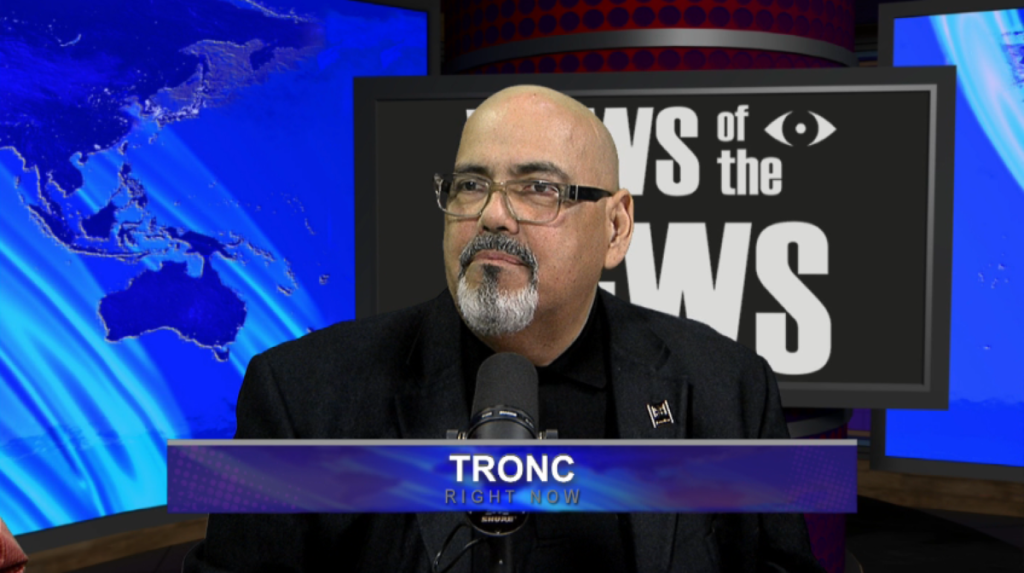
- Mark Hinojosa, a journalist, photographer, professor and pioneer in digital media convergence, died Feb. 21 after an 8-year battle with cancer. He was 63, Veronica Villafañe wrote Feb. 24 for her Media Moves column. Hinojoa was diagnosed with multiple myeloma in 2012.
Villafañe also wrote, “He spent more than four decades working in newspapers as a photographer, assistant managing editor and director of interactive media. But the downsizing of the print journalism industry hit him twice, leading him on a new career path as an associate professor for convergence journalism at the Missouri School of Journalism, where he taught what he was passionate about: multimedia storytelling through audio, still photography and video. . . .” Columbia Missourian
Charles Hobson was instrumental in the success of the groundbreaking series “Inside Bedford-Stuyvesant.” (video) (Credit: WNET-TV)
- “Charles Hobson, an Emmy Award-winning producer who helped shatter racial stereotypes by delivering a black perspective that had been missing from early television programming, died on Feb. 13 in the Bronx,” Sam Roberts reported Feb. 21 for the New York Times. “He was 83.
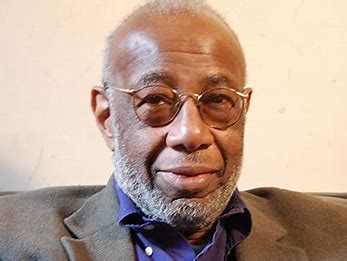 “Mr. Hobson (pictured), who lived in Boerum Hill, Brooklyn, was instrumental in the success of the groundbreaking series ‘Inside Bedford-Stuyvesant’ and ‘Like It Is,’ which introduced white audiences to everyday life in black communities. Those places had been largely invisible, or defined by negative images, during the first decades of TV’s evolution. . . .”
“Mr. Hobson (pictured), who lived in Boerum Hill, Brooklyn, was instrumental in the success of the groundbreaking series ‘Inside Bedford-Stuyvesant’ and ‘Like It Is,’ which introduced white audiences to everyday life in black communities. Those places had been largely invisible, or defined by negative images, during the first decades of TV’s evolution. . . .”
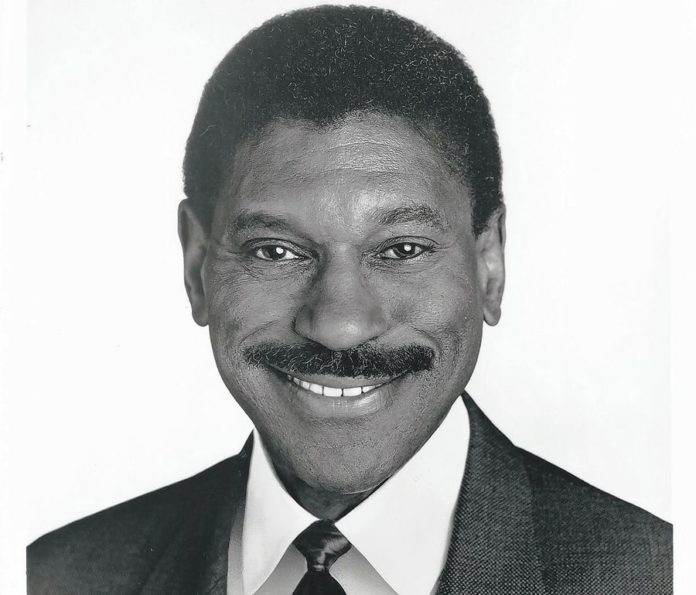 Bob Petty (pictured), one of the first African American on-air personalities at WLS-TV in Chicago, where he spent more than 30 years as a reporter and news anchor, died Feb. 19 of complications from lung cancer, according to his son, Bob, Bob Goldsborough reported Feb. 21 for the Chicago Tribune.
Bob Petty (pictured), one of the first African American on-air personalities at WLS-TV in Chicago, where he spent more than 30 years as a reporter and news anchor, died Feb. 19 of complications from lung cancer, according to his son, Bob, Bob Goldsborough reported Feb. 21 for the Chicago Tribune.
“Petty retired in 2002,” Goldsborough wrote. “The National Academy of Television Arts and Sciences honored Petty with its Silver Circle Award in 2003. He was named to the Arizona State University Walter Cronkite School of Journalism and Mass Communication Hall of Fame in 2007. . . .”
 “Barbara Smith, a fashion model [known as B. Smith], who created a business empire by catering to the tastes of aspiring black professionals with her restaurants, television shows, bedding and furniture collections and books on entertaining, died on Saturday at her home on Long Island,” William Grimes reported Feb. 26 for the New York Times. “She was 70.
“Barbara Smith, a fashion model [known as B. Smith], who created a business empire by catering to the tastes of aspiring black professionals with her restaurants, television shows, bedding and furniture collections and books on entertaining, died on Saturday at her home on Long Island,” William Grimes reported Feb. 26 for the New York Times. “She was 70.
“The cause was early-onset Alzheimer’s disease, her family said. Ms. Smith had waged a long and public battle with the disease, which was diagnosed when she was in her 50s. . . . Often called the black Martha Stewart, Ms. Smith translated her sense of style into a series of books on cooking and entertaining; a syndicated weekly television show on NBC, ‘B. Smith with Style,’ ” Grimes continued, as well as a magazine. Hollywood Reporter
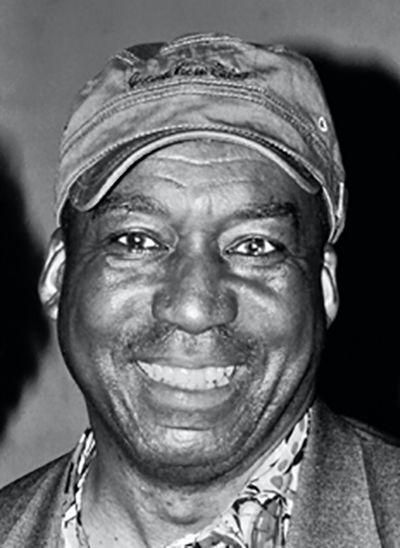 James G. Spady (pictured, by Samir Meghelli), “a renowned writer, historian and humanitarian,” died on Feb. 17 at 75, Samir Meghelli reported Monday for the Philadelphia Tribune.
James G. Spady (pictured, by Samir Meghelli), “a renowned writer, historian and humanitarian,” died on Feb. 17 at 75, Samir Meghelli reported Monday for the Philadelphia Tribune.
“Spady authored or edited more than 15 books, published dozens of scholarly journal articles and book chapters, worked in radio and film and wrote hundreds of newspaper articles for various print media, particularly historic Black newspapers including The Philadelphia New Observer and Scoop USA. . . .”
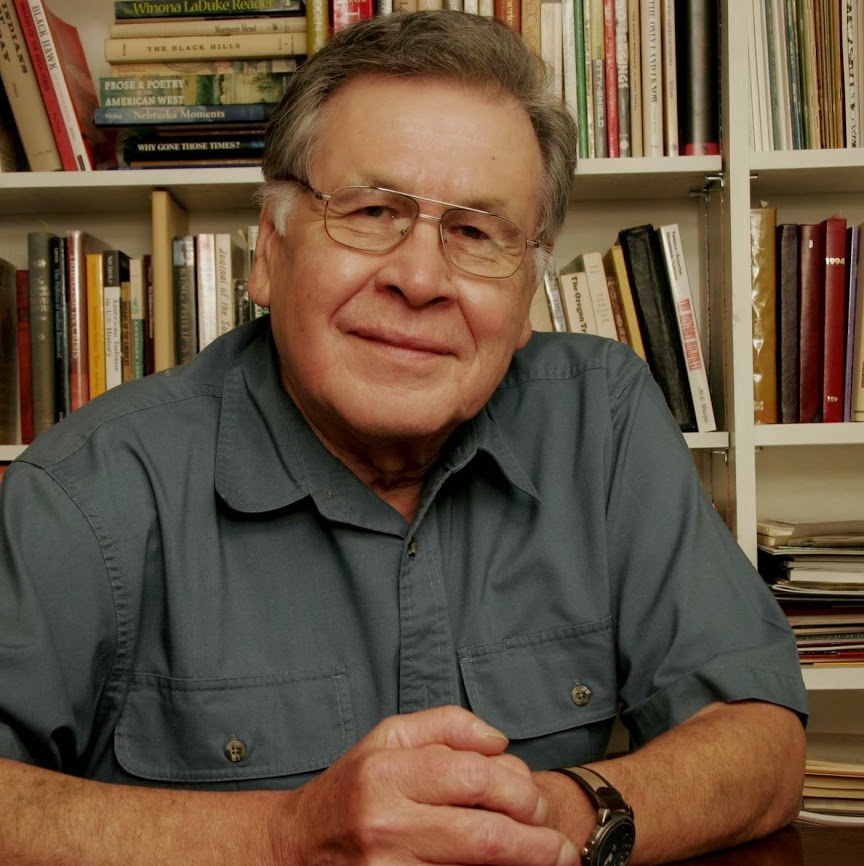 “Charles ‘Chuck’ Trimble (pictured), Oglala Lakota, a man who made a lasting impact on Indian Country has died at the age of 84,” Kolby KickingWoman reported Tuesday for Indian Country Today.
“Charles ‘Chuck’ Trimble (pictured), Oglala Lakota, a man who made a lasting impact on Indian Country has died at the age of 84,” Kolby KickingWoman reported Tuesday for Indian Country Today.
“Trimble served as the executive director for the National Congress of American Indians from 1972-78 and was a principal founder of the American Indian Press Association. He was also inducted into the South Dakota Hall of Fame in 2013. . . .” Tim Giago commentary
Columnist Seeks Last Word on His Ex-Boss
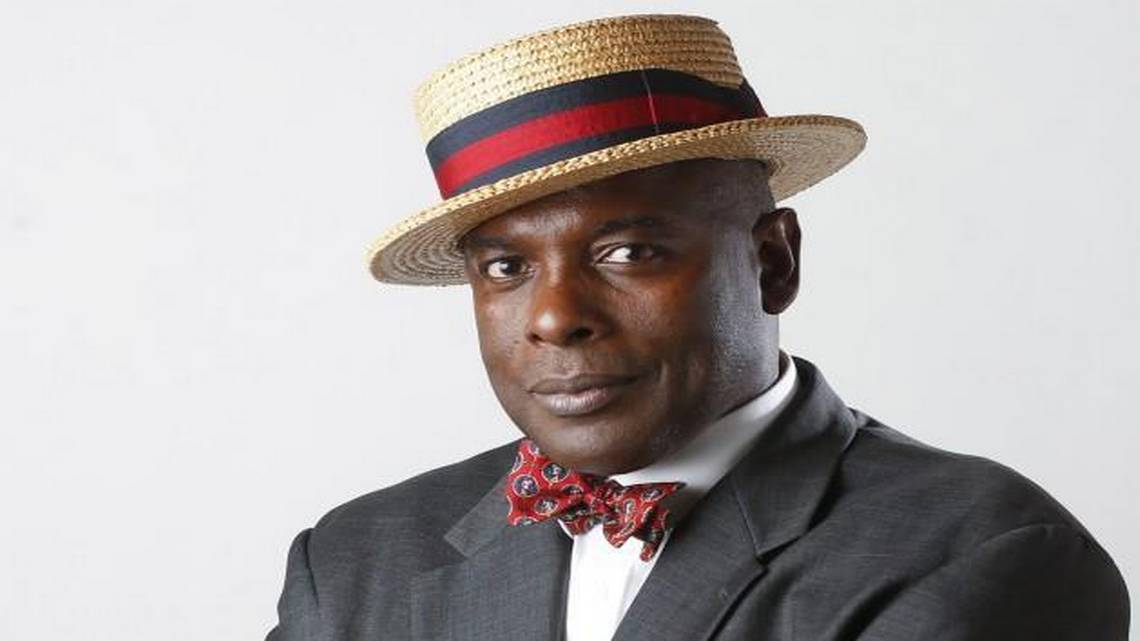 “After engineering the deal that has pushed a great newspaper chain to the precipice — and imperiled several great newspapers,” Gary Pruitt, former CEO of McClatchy Newspapers, “is still doing just fine,” Barry Saunders (pictured), ex-columnist at McClatchy’s News and Observer in Raleigh, N.C., wrote Feb. 20 on his Saunders Report website.
“After engineering the deal that has pushed a great newspaper chain to the precipice — and imperiled several great newspapers,” Gary Pruitt, former CEO of McClatchy Newspapers, “is still doing just fine,” Barry Saunders (pictured), ex-columnist at McClatchy’s News and Observer in Raleigh, N.C., wrote Feb. 20 on his Saunders Report website.
“While thousands of journalists were forced out of jobs at which they excelled and which they’d hope to have for a long time, Pruitt pirouetted over to the Associated Press as deftly as Victor Silvester.
“He has served as AP’s well-compensated CEO and president since 2012.
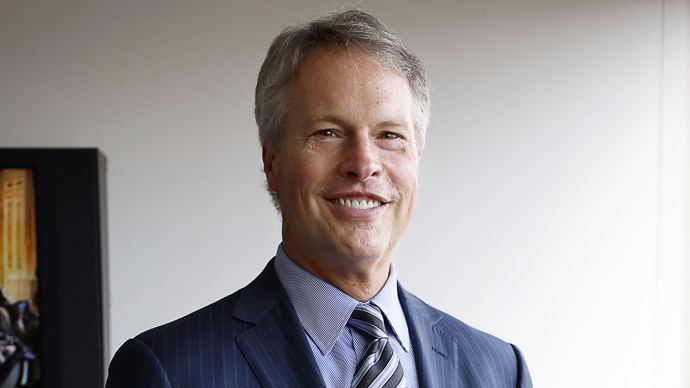 “Can you imagine sitting in on that job interview when AP executives told Pruitt (pictured) ‘We want you to do for us what you did for McClatchy’?
“Can you imagine sitting in on that job interview when AP executives told Pruitt (pictured) ‘We want you to do for us what you did for McClatchy’?
“You bet, T.C.
“I called and left a message for Pruitt at his New York office, but haven’t heard back from him.
“It’s been two-and-a-half years since I left the N&O after 24 glorious years as a columnist there. . . .”
- Nick Charles, Daily News, New York: The press is in economic jeopardy, and black Americans should especially worry (Feb. 18)
- Kerry Flynn, CNN: Los Angeles Times is offering buyouts to staffers with at least two years of employment
- Benjamin Goggin, Business Insider: Tabloid and magazine publisher American Media, Inc. continues cuts, laying off 23 people Monday
- Allen Johnson, News & Record, Greensboro, N.C.: All the best, Barry Saunders (July 20, 2017)
- Ryan Lillis, Sacramento Bee: Sacramento Mayor Steinberg recruiting ownership group in effort to buy Sacramento Bee
- Tampa Bay Times: Tampa Bay Times announces temporary pay cut for full-time staff (Feb. 28)
Short Takes
- “Illuminating the stories of extraordinary American heroines from the early years of feminism, American Masters — Unladylike2020 is a multimedia series consisting of a one-hour special for broadcast and 26 digital short films featuring courageous, little-known and diverse female trailblazers from the turn of the 20th century. Coming this summer on PBS.” Each of the 26 shorts is to be released every Wednesday on the PBS “American Masters” website and Unladylike2020’s interactive website until Aug. 26, Women’s Equality Day.
- While there were glitches that kept the 24-hour Black News Channel from being seen in all the markets it was hoping to reach during its first week launch, former U.S. Rep. J.C. Watts, BNC’s chairman, said those problems will be resolved, Brendan Farrington wrote Feb. 14 for the Associated Press. “The network has or is working on agreements with cable, satellite and television streaming companies and expects to soon be available in more than 100 million households. . . .” Website
- “The Trump administration on Monday limited to 100 the number of Chinese citizens who may work in the United States for five state-controlled Chinese news organizations,” Lara Jakes and Marc Tracy reported for the New York Times Monday, updated Tuesday. They also wrote, “The State Department insisted that it was not expelling Chinese journalists, a step that Beijing took last month against three Wall Street Journal reporters — the first time foreign correspondents had been ordered to leave China since 1998. . . .”
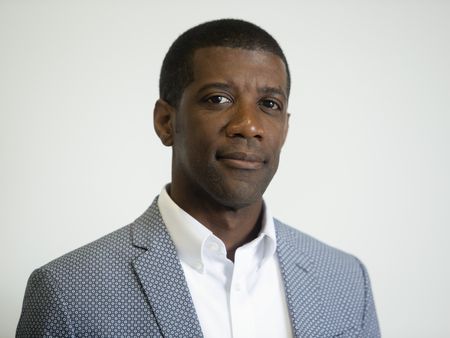 I revealed in October “that my cousin volunteered to donate a kidney to me, and if you’re reading this column, then that means that the transplant has occurred,” Jarvis DeBerry (pictured), formerly of the New Orleans Times-Picayune, wrote Feb. 26 for his new home, cleveland.com. “That also means that I’ll be gone from this space from an extended period of time.” DeBerry had written Oct. 17, “I’m a young, black man with kidney disease, and I hope that by dressing up the doctors and nurses will have a higher opinion of me. I want to signal that I’m intelligent, that I’m professional, that I am worthy of their respect. Because the fear is always there that I will be looked down upon and blamed for my poorly functioning kidneys. . . .”
I revealed in October “that my cousin volunteered to donate a kidney to me, and if you’re reading this column, then that means that the transplant has occurred,” Jarvis DeBerry (pictured), formerly of the New Orleans Times-Picayune, wrote Feb. 26 for his new home, cleveland.com. “That also means that I’ll be gone from this space from an extended period of time.” DeBerry had written Oct. 17, “I’m a young, black man with kidney disease, and I hope that by dressing up the doctors and nurses will have a higher opinion of me. I want to signal that I’m intelligent, that I’m professional, that I am worthy of their respect. Because the fear is always there that I will be looked down upon and blamed for my poorly functioning kidneys. . . .”
- “Following MSNBC contributor Dr. Jason Johnson’s inflammatory remarks about supporters and campaign staffers of Democratic presidential candidate Sen. Bernie Sanders (I-VT), the academic has been temporarily benched by the network, sources confirmed to The Daily Beast,” Justin Baragona and Maxwell Tani reported Feb. 26 for the Daily Beast. ” . . . During an interview last week on SiriusXM’s The Karen Hunter Show, Johnson claimed ‘racist white liberals’ support Sanders and that the senator has done ‘nothing for intersectionality.’ The MSNBC contributor then took aim at the women of color who work for Sanders. ‘I don’t care how many people from the island of misfit black girls you throw out there to defend you,’ Johnson exclaimed. . . .”
- “The Wall Street Journal (WSJ) and CUNY’s Lehman College announced a unique technology-driven journalism training collaboration today that aims to introduce students to data-science reporting careers and, ultimately, help improve diversity in America’s newsrooms and at the nation’s largest newspaper,” Alonza Robertson wrote Feb, 27 for Lehman College. “The WSJ & Lehman Journo-Tech program will provide professional internship and training opportunities to interested Lehman ‘fellows’ and curriculum support for Lehman’s faculty beginning in the 2020 fall semester. . . .”
- “National television news has paid little attention to a shocking string of deaths in Mississippi’s jails and prisons that has left 19 inmates dead since late December, roughly half at the Mississippi State Penitentiary at Parchman,” Madeline Peltz wrote Feb. 21 for Media Matters for America. “In February, the Justice Department announced it would be launching a probe into the inhumane conditions at four Mississippi prisons. . . .”
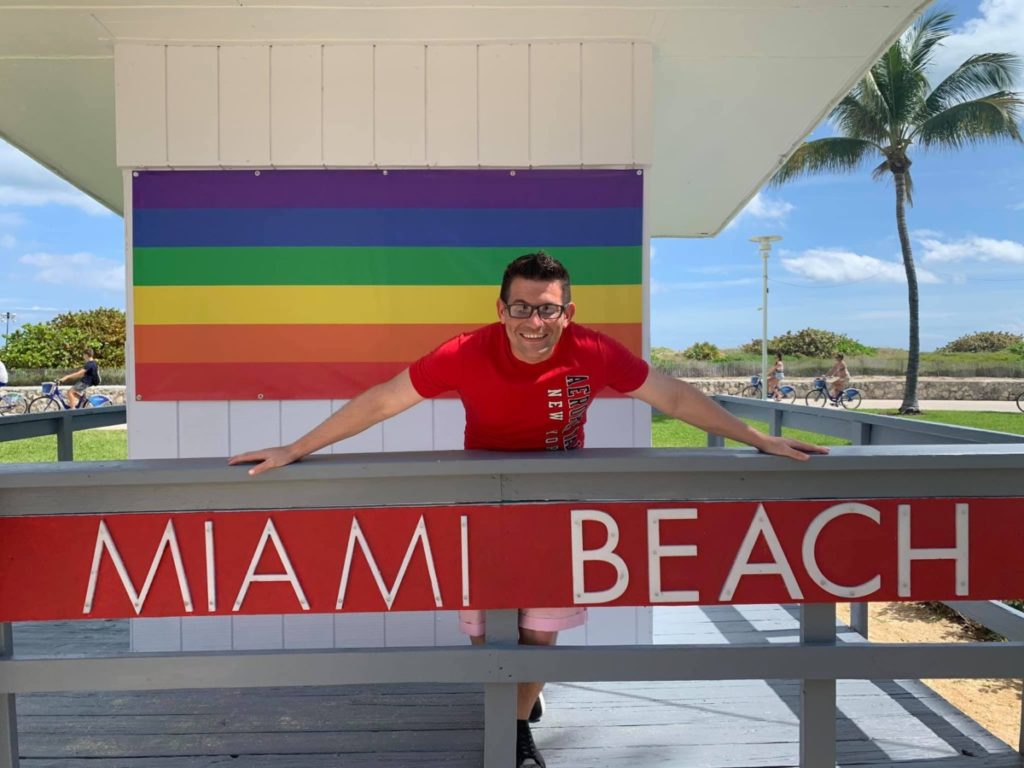
- “U.S. Immigration and Customs Enforcement on Wednesday released from its custody a Washington Blade contributor from Cuba who won asylum in the U.S.,” Michael K. Lavers reported for the LGBT newspaper. “The Board of Immigration Appeals, which is overseen by the Department of Justice, on Feb. 28 dismissed an appeal of Judge Timothy Cole’s ruling that granted Yariel Valdés González asylum last September. . . . He asked for asylum based on the persecution he suffered in Cuba because he is a journalist. . . .” Lavers left the ICE detention center in Ferriday, La., with Valdés González.
- In Kansas City, “Former KSHB-TV Channel 41 sports anchor Demetrice ‘Dee’ Jackson has settled his race discrimination and retaliation lawsuit against the station,” Dan Margolies reported Feb. 17 for public radio’s KCUR.
- “In a ‘high-octane’ drive to widen access for more middle- and low-income students, USC will eliminate tuition for families earning $80,000 or less annually and will no longer consider home equity in financial aid calculations,” Teresa Watanabe reported Feb. 20 for the Los Angeles Times, referring to the University of Southern California.
- “As the NHL has become more diverse on ice, it’s also become more diverse and inclusive in broadcasting the game,” William Douglas reported Feb. 14 for NHL.com. A caption promises, “Today, we look at the growing number of black former NHL players who have transitioned into broadcasting the game.”
- “The National Association of Black Journalists (NABJ), National Association of Hispanic Journalists (NAHJ), Asian American Journalists Association (AAJA), Journalism and Women Symposium (JAWS) and National Lesbian and Gay Journalists Association (NLGJA) met with ViacomCBS Executive Vice President, Global Head of Inclusion Marva Smalls on Thursday, February 13, 2020,” NABJ announced. “Candid discussions centered on diversity and inclusion (D&I) paths and the ViacomCBS commitment in the future following the merger of Viacom and CBS last December. . . .”
- “
 Amanda Barrett, a longtime newsroom manager at The Associated Press with years of experience leading innovative journalism and driving the coverage of big stories, has been promoted to deputy managing editor,” the AP announced on Feb. 7. “In her expanded role, Barrett will oversee newsroom talent development as well as continue to manage the Nerve Center at AP’s New York headquarters. The Nerve Center serves as AP’s hub for global news coordination, research, customer communication and audience engagement. . . .”
Amanda Barrett, a longtime newsroom manager at The Associated Press with years of experience leading innovative journalism and driving the coverage of big stories, has been promoted to deputy managing editor,” the AP announced on Feb. 7. “In her expanded role, Barrett will oversee newsroom talent development as well as continue to manage the Nerve Center at AP’s New York headquarters. The Nerve Center serves as AP’s hub for global news coordination, research, customer communication and audience engagement. . . .”
- “A federal judge on Tuesday dismissed Virginia Lt. Governor Justin Fairfax’s lawsuit against CBS, which alleged the network defamed him when it aired interviews in 2019 with two women who accused him of sexual assault,” Oliver Darcy reported Feb. 11 for CNN.
 “Katrease Stafford and Aaron Morrison (pictured) will join the AP’s Race and Ethnicity team and write about how race intersects with topics such as politics, criminal justice, government federal policies, climate change, religion, entertainment and sports,” including the 2020 campaign, the Associated Press announced Feb. 13. AP also said, “Stafford is currently an enterprise and investigative reporter at the Detroit Free Press, and Morrison is a senior reporter at The Appeal, a national nonprofit criminal justice outlet where he covers policing, incarceration and criminal justice reform. . . .”
“Katrease Stafford and Aaron Morrison (pictured) will join the AP’s Race and Ethnicity team and write about how race intersects with topics such as politics, criminal justice, government federal policies, climate change, religion, entertainment and sports,” including the 2020 campaign, the Associated Press announced Feb. 13. AP also said, “Stafford is currently an enterprise and investigative reporter at the Detroit Free Press, and Morrison is a senior reporter at The Appeal, a national nonprofit criminal justice outlet where he covers policing, incarceration and criminal justice reform. . . .”
- Clytie Bunyan, coordinator of the internship program and staff development at the Oklahoman, and Yvette Walker, assistant dean for student affairs at the University of Oklahoma’s Gaylord College, are among 10 journalists, two Lifetime Achievement Award winners and 10 posthumous awardees to be inducted into the Oklahoma Journalism Hall of Fame on April 24, Darla Shelden reported Feb. 18 for the City Sentinel in Oklahoma City.
- The late Wall Street Journal Pulitzer Prize writer Angelo Henderson is among six new members to be inducted April 26 into the Michigan Journalism Hall of Fame, Michigan State University announced Feb. 19.
- Washington Post editorial writer Jonathan Capehart is the recipient of the Randy Shilts Award for LGBTQ Coverage, the National Lesbian and Gay Journalists Association announced Wednesday.
- Ebony magazine unveiled its annual Power 100 list on Feb. 26. Those cited include Brent Staples, New York Times editorial writer; Dorothy Tucker, president, National Association of Black Journalists; Benjamin F. Chavis Jr., president and CEO, National Newspaper Publishers Association; Gayle King , an anchor at CBS News; broadcast journalist T.J. Holmes; journalist Roland S. Martin; and Karen Hunter, journalist and talk show host.
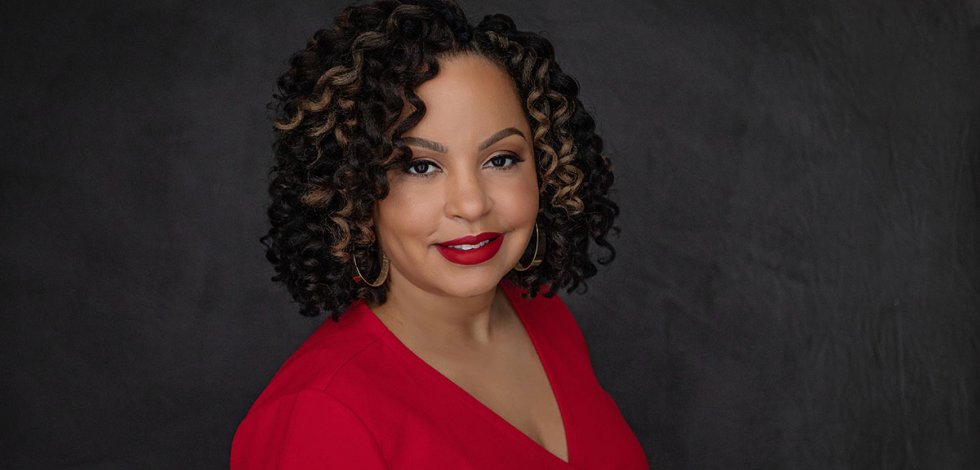 Wendi C. Thomas (pictured), who set up a nonprofit digital newsroom in Memphis called MLK50: Justice Through Journalism, dedicated to reporting on economic justice, has won the 2020 Selden Ring Award for Investigative Reporting for the series “Profiting from the Poor,” produced last year in partnership with ProPublica’s Local Reporting Network, USC Annenberg announced Monday.
Wendi C. Thomas (pictured), who set up a nonprofit digital newsroom in Memphis called MLK50: Justice Through Journalism, dedicated to reporting on economic justice, has won the 2020 Selden Ring Award for Investigative Reporting for the series “Profiting from the Poor,” produced last year in partnership with ProPublica’s Local Reporting Network, USC Annenberg announced Monday.
- Included among this year’s NAACP Image Awards, Variety reported Feb. 22, were: “Unsung” (TV One), outstanding news/information (series or special); “Red Table Talk” (Facebook Watch), outstanding talk series; “Hitsville: The Making of Motown” (Showtime), outstanding documentary (television – series or special)); “When They See Us” (Netflix) outstanding television movie, limited-series or dramatic special; “More Than Enough: Claiming Space for Who You Are (No Matter What They Say),” by Elaine Welteroth, outstanding literary work – biography/autobiography; and “Around Harvard Square” by C.J. Farley, outstanding literary work – youth/teens.
- For far too long, the World War II detention of Japanese Americans “has been euphemistically referred to as internment,” Doris Truong wrote Feb. 19 for the Poynter Institute. “With the 78th anniversary of Executive Order 9066 upon us, we as journalists must push for clearer language. We must plainly explain what actually happened in U.S. history. . . .”
- “The Undefeated brand is expanding across The Walt Disney Company,” ESPN announced Tuesday. “As part of this expansion, Kevin Merida,who joined ESPN from The Washington Post four years ago — will continue in his role as Sr. VP and Editor in Chief of The Undefeated and now report directly to ESPN President Jimmy Pitaro.” In addition, “Rob King has been promoted to Sr. VP and Editor-At-Large, ESPN Content, a crucial position providing editorial decision-making and leadership across ESPN’s companywide storytelling efforts. This position was previously occupied by iconic and innovative ESPN leader John Walsh who retired in 2015.” Also announced: “We will also hire a business leader under Kevin with a focus on driving growth and monetization.”
- “Online streaming giant Netflix is making strides to push for more international content — starting with their African Originals initiative,” Njera Perkins reported Monday for afrotech.com. “Neflix’s CEO Ted Sarandos and a team of the company’s high-level executives have spent the last week traveling across Africa to recruit local creators and develop plans to position the continent as a new hub for entertainment content. As the Head of African Originals for the streaming service, Dorothy Ghettuba has led the charge to create fresh visual content for Netflix that brings a spotlight to African stories while attracting a global audience. . . .”
- Following the Feb. 24 arrest of documentary filmmaker Melissa Cox, Reporters Without Borders called Feb. 27 on the Royal Canadian Mounted Police “to respect the rights of journalists covering indigenous protests and to ensure journalists can do their work without being subject to punitive action. The RCMP should not file charges against this journalist.” Cox was arrested in British Columbia while “filming Wet’suwet’en First Nation land defenders’ ongoing efforts to resist a gas pipeline from being constructed through their territory,” the press freedom group said.
- The International Press Institute said Feb. 27 it was dismayed “over the plea bargain that Tanzania journalist Erick Kabendera was forced to sign this week to secure his release after seven months in prison. Kabendera, an award-winning journalist, walked out of the prison on February 24 after entering into a plea bargain agreement with the prosecution. Under the agreement, Kabendera, who was charged with money laundering, tax evasion and organized crime, paid a fine of around 40,000 euros [$45,000 U.S.] and has agreed to pay another 70,000 euros [$79,000 U.S.] within a period of six months. . . . ‘The government of Tanzania President John Magufuli has used Erick Kabendera’s case to send a chilling message to the independent media in the country that criticism of the president will not be tolerated’, IPI Advocacy Director Ravi R. Prasad said. . . .”
Facebook users: “Like” “Richard Prince’s Journal-isms” on Facebook.
Follow Richard Prince on Twitter @princeeditor
Richard Prince’s Journal-isms originates from Washington. It began in print before most of us knew what the internet was, and it would like to be referred to as a “column.” Any views expressed in the column are those of the person or organization quoted and not those of any other entity. Send tips, comments and concerns to Richard Prince at journal-isms-owner@yahoogroups.com
View previous columns (after Feb. 13, 2016).
- Diversity’s Greatest Hits, 2018 (Jan. 4, 2019)
- Book Notes: Is Taking a Knee Really All That? (Dec. 20, 2018)
- Book Notes: Challenging ’45’ and Proudly Telling the Story (Dec. 18, 2018)
- Book Notes: Get Down With the Legends! (Dec. 11, 2018)
- Journalist Richard Prince w/Joe Madison (Sirius XM, April 18, 2018) (podcast)
- Richard Prince (journalist) (Wikipedia entry)
- February 2018 Podcast: Richard “Dick” Prince on the need for newsroom diversity (Gabriel Greschler, Student Press Law Center, Feb. 26, 2018)
- Diversity’s Greatest Hits, 2017 — Where Will They Take Us in the Year Ahead?
- Book Notes: Best Sellers, Uncovered Treasures, Overlooked History (Dec. 19, 2017)
- An advocate for diversity in the media is still pressing for representation, (Courtland Milloy, Washington Post, Nov. 28, 2017)
- Morgan Global Journalism Review: Journal-isms Journeys On (Aug. 31, 2017)
- Diversity’s Greatest Hits, 2016
- Book Notes: 16 Writers Dish About ‘Chelle,’ the First Lady
- Book Notes: From Coretta to Barack, and in Search of the Godfather
- Journal-isms’ Richard Prince Wants Your Ideas (FishbowlDC, Feb. 26, 2016)
- “JOURNAL-ISMS” IS LATEST TO BEAR BRUNT OF INDUSTRY’S ECONOMIC WOES (Feb. 19, 2016)
- Richard Prince with Charlayne Hunter-Gault,“PBS NewsHour,” “What stagnant diversity means for America’s newsrooms” (Dec. 15, 2015)
- Book Notes: Journalists Follow Their Passions
- Book Notes: Journalists Who Rocked Their World
- Book Notes: Hands Up! Read This!
- Book Notes: New Cosby Bio Looks Like a Best-Seller
- Journo-diversity advocate turns attention to Ezra Klein project (Erik Wemple, Washington Post, March 5, 2014)

